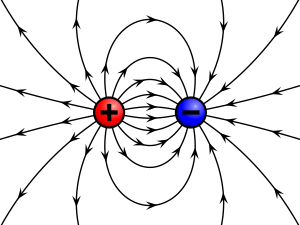
There are only two types of electric charge (positive and negative). These charges are equal in size, but different in character. They are denoted as positive (+) and negative (-). A charge exist between any two objects that have a net charge. To calculate the net charge, sum together the positive and negative charges.
With electric charges, like charges repel each other, and unlike charges attract each other. So a positive charged object would attract a negatively charged object and would repel a positively charged object.
The unit of charge is called a Coulomb. The protons have a positive charge, while the electrons have a negative charge. The protons positive charge is equal in size to the electrons. It is possible to have a neutral atom but this would require the same number of electrons and protons.
- 1 coulomb is equal to 6.25*10^18 electrons.
All neutral atoms have the same number of electrons and protons.